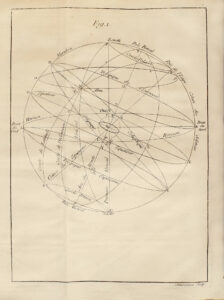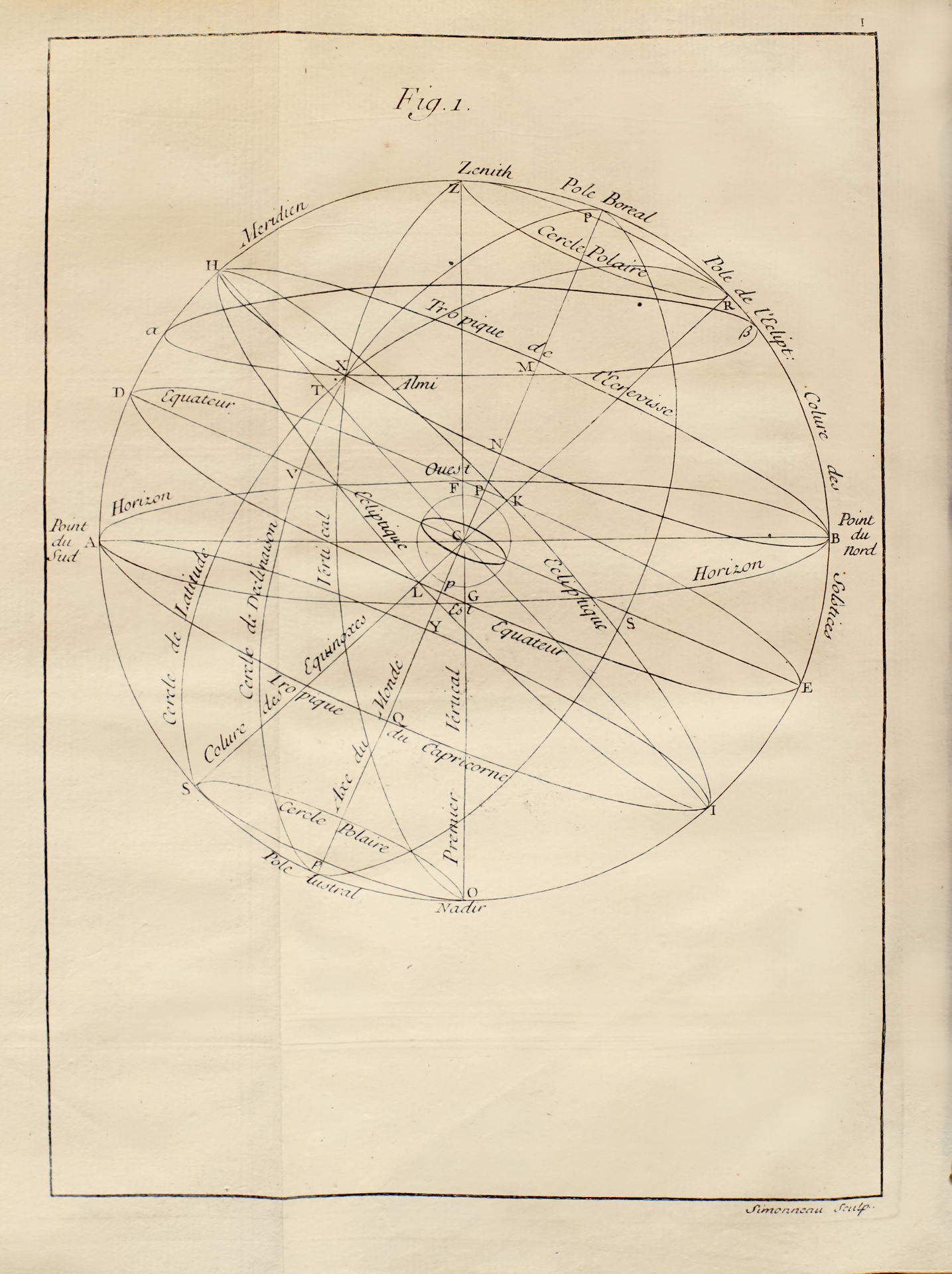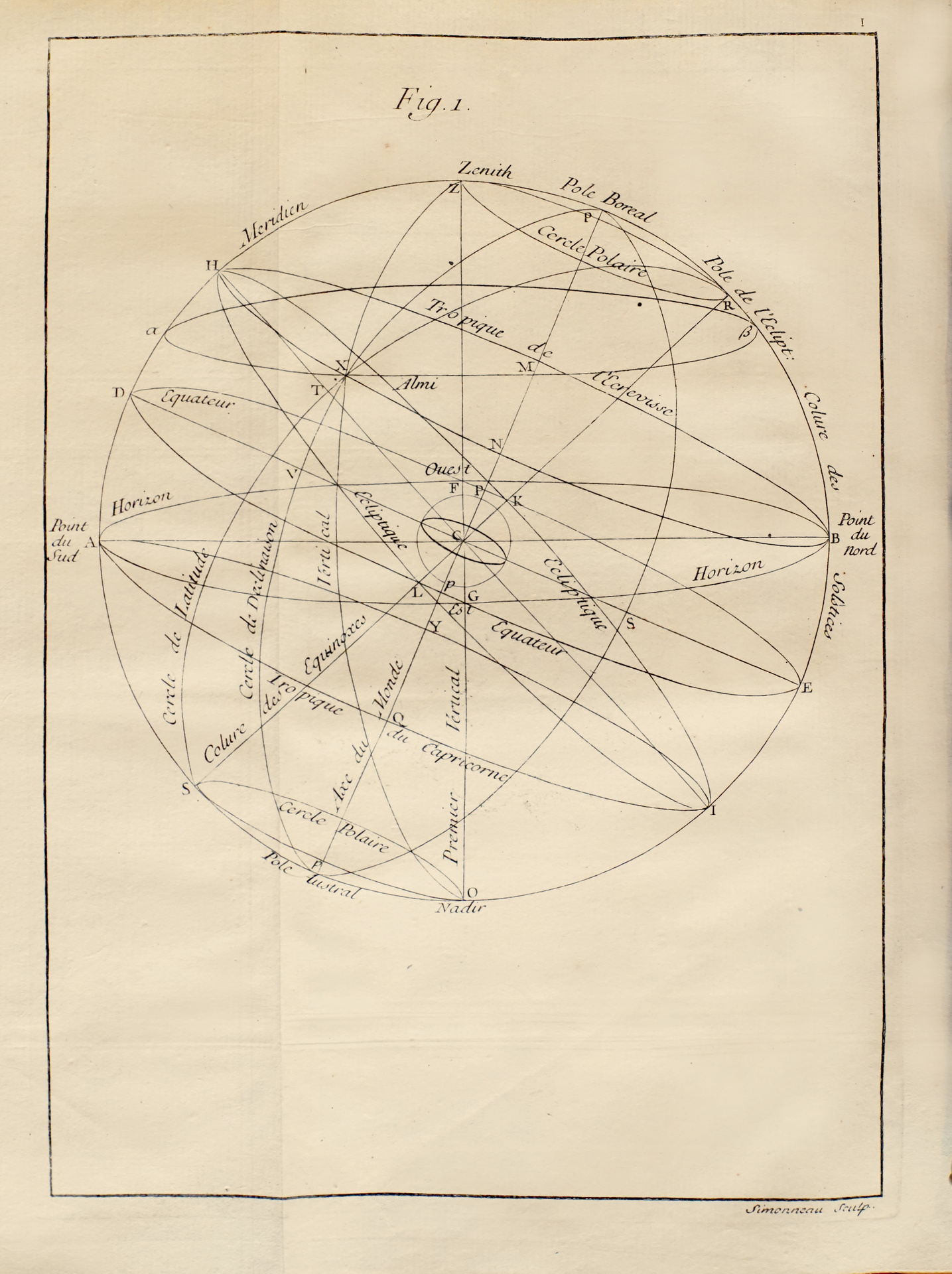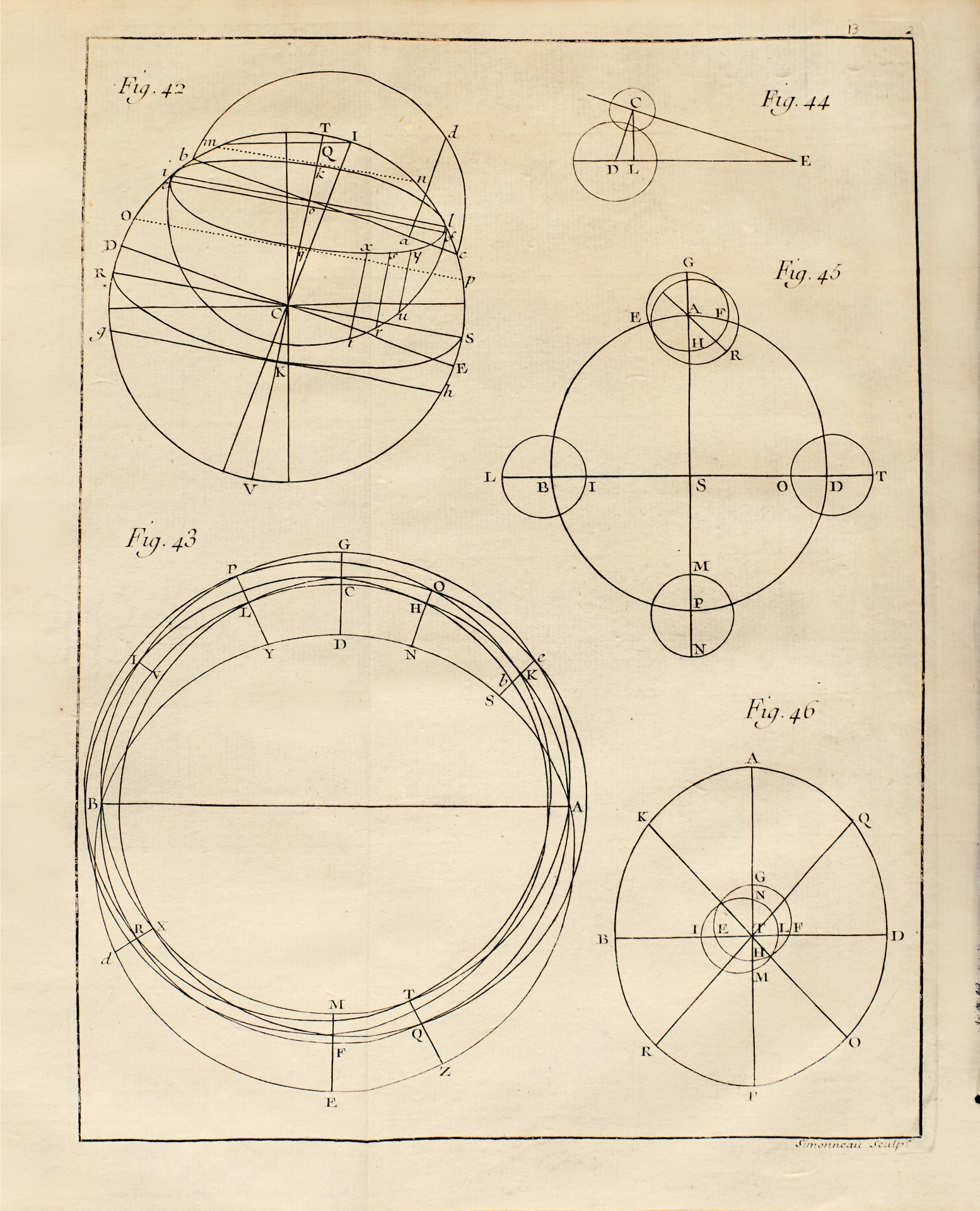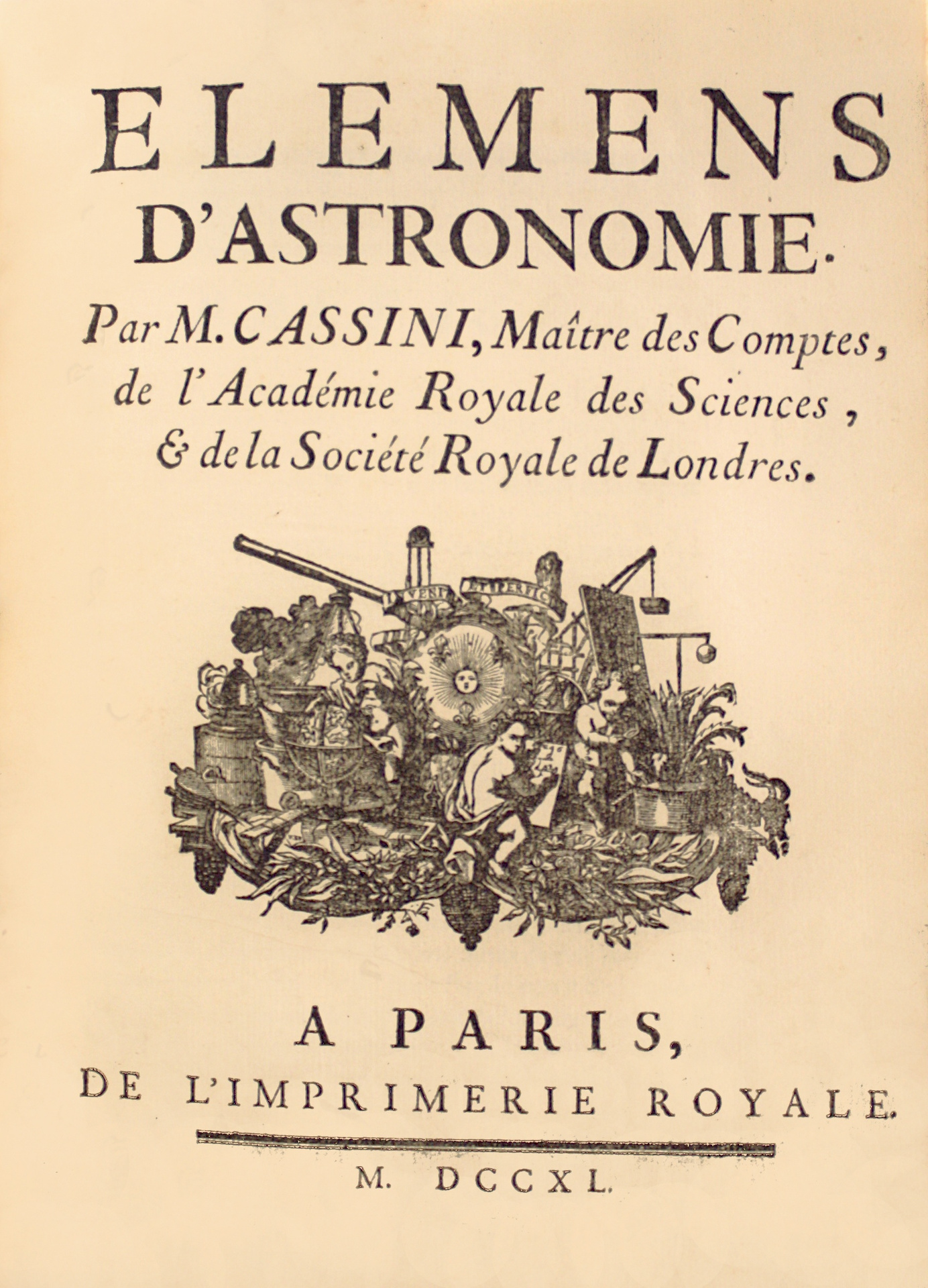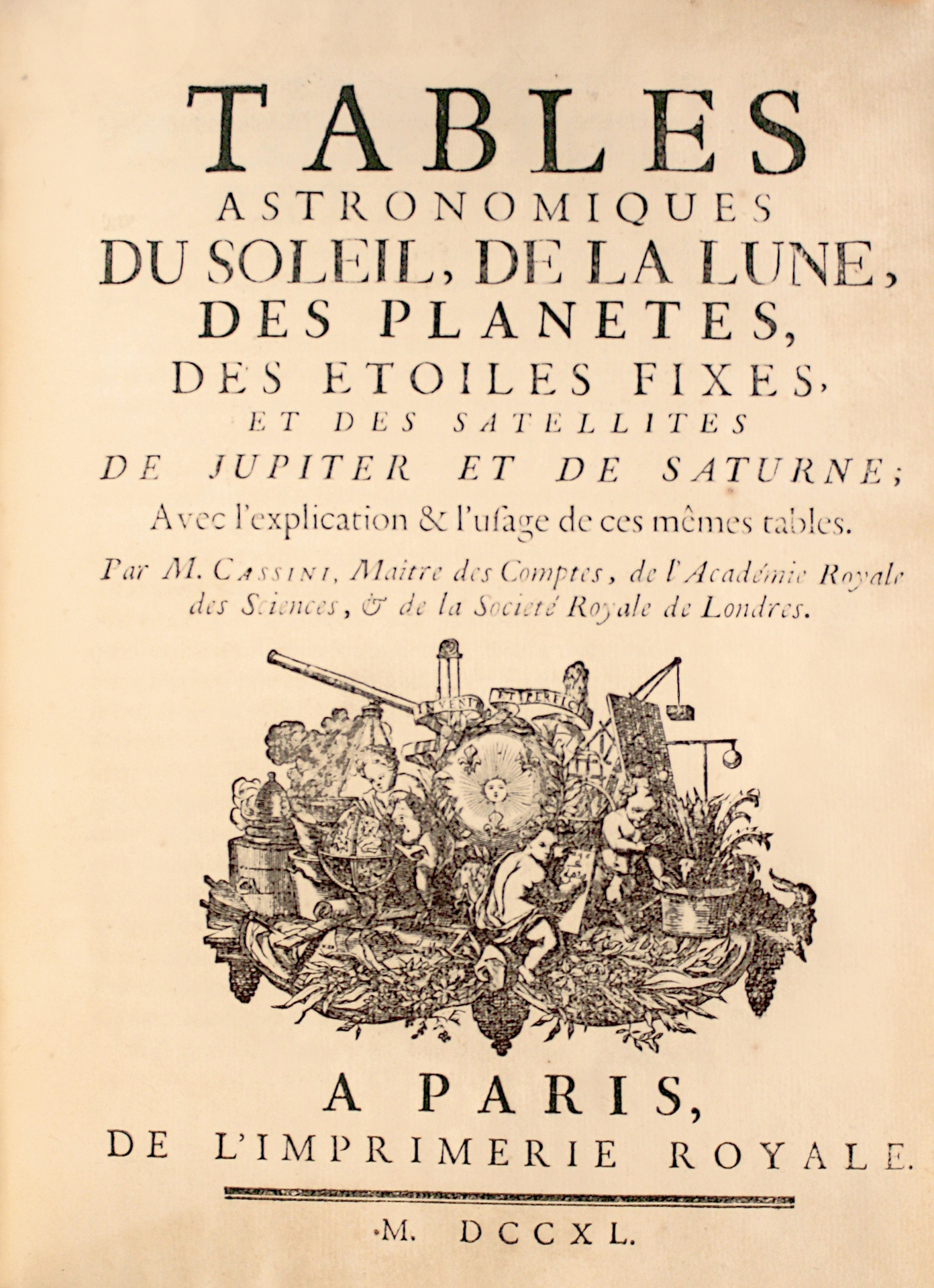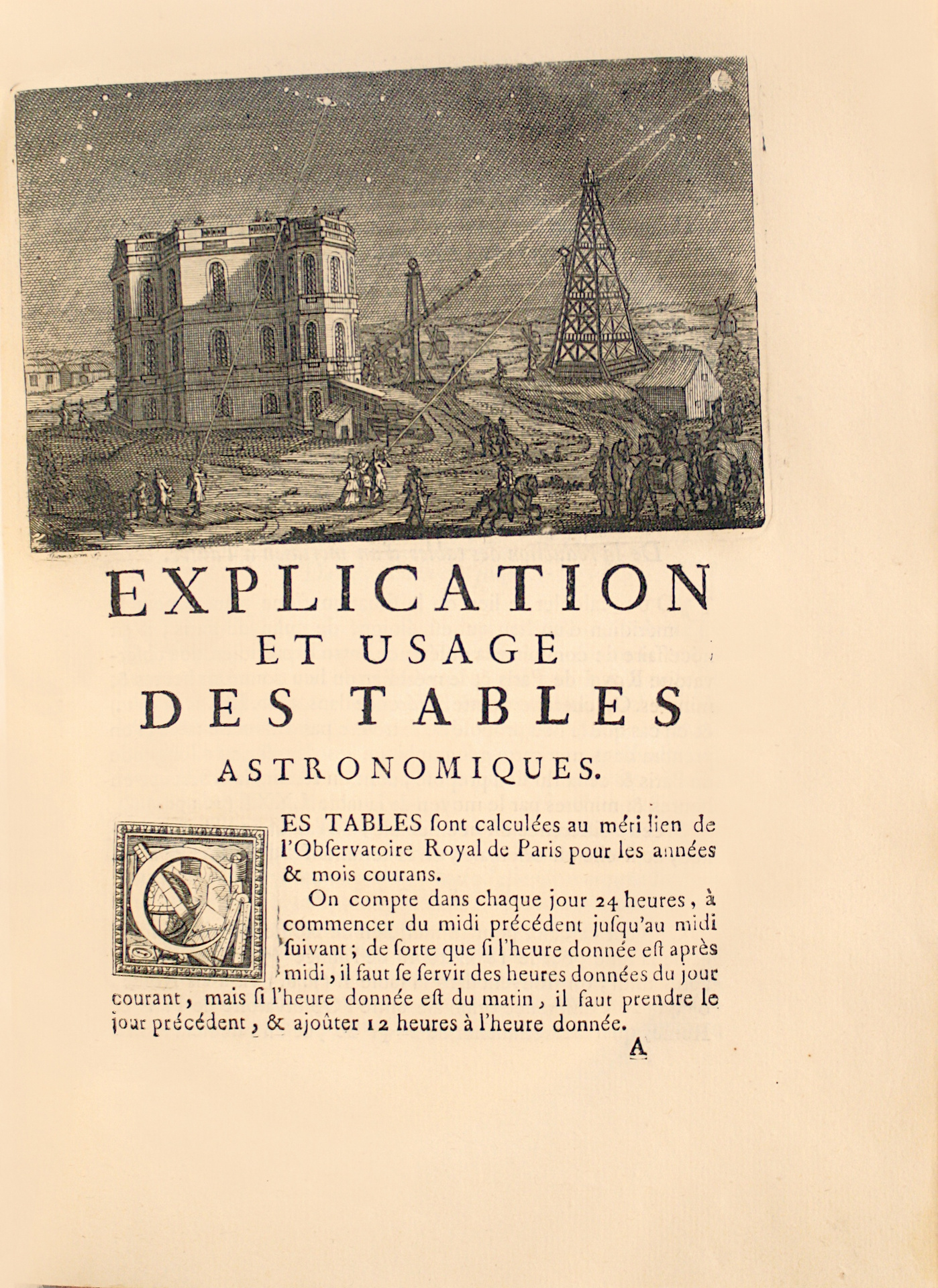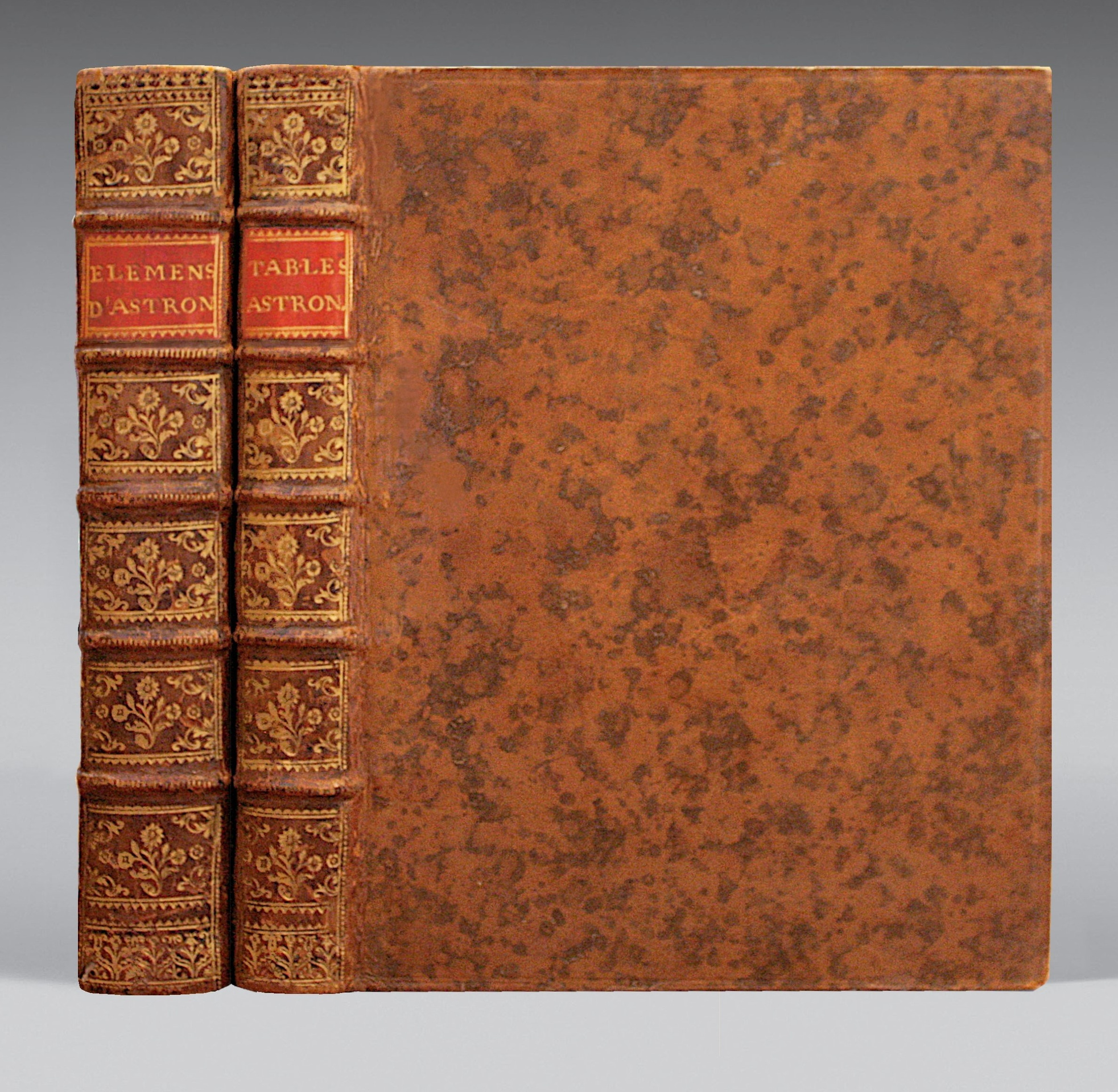Paris, de l’Imprimerie royale, 1740.
– [With] : II/ [Same author]. Tables astronomiques du Soleil, de la Lune, des planètes, des étoiles fixes, et des satellites de Jupiter et de Saturne ; Avec l’explication & l’usage de ces mêmes tables.
Paris, de l’Imprimerie royale, 1740.
[Followed by] : Cassini de Thury, César François. Addition aux tables astronomiques de M. Cassini.
A Paris, chez Durand, 1756.
2 volumes 4to [252 x 187 mm] of: I/ xvi pp., (6) ll. of table, 643 pp., 26 folding plates; II/ xiv pp., (3) ll. of table, 120 pp., 222 pp. of astronomical tables, (1) bl. l., (1) l., 98 pp. of addition to the astronomical tables. Full marbled calf, double blind-stamped fillet around the covers, ribbed spines decorated, red morocco lettering pieces, decorated borders, mottled edges. Contemporary binding.
First edition of these two important astronomical works.
I/ First edition of this very complete trêtise, in which the author engages in an original resêrch of the value of the main digital elements of astronomy, and which contains historical details which are still interesting today. Houzêu & Lancaster n°9251 ; Lalande p. 411 ; Poggendoff I. 380 pour les "
éléments" ; Poggendoff I. 390 pour les "
tables" ; D.S.B. III, p.10.
The author of this work was the famous astronomer Jacques Cassini (1677-1756), second of the name, son of the astronomer and engineer Giovanni Domenico Cassini (1625-1712). Member of the Academy of Sciences since 1694 and received at the Royal Academy of Sciences in London in 1696, Cassini is best known for his works relating to the determination of the figure of the êrth.
He presents it in his preface as the first trêtise on elements of astronomy written in French. The work begins with considerations on the circles of the sphere, the systems of the world, astronomical refractions and parallax; it continues with the trêtise which is divided into 9 parts: the first dêls with fixed stars, the second dêls with the sun and its revolution around its axis, the third with the theory of the moon, the fourth with Saturn, the fifth with Jupiter, the sixth with Mars, the seventh with Venus, the eighth with Mercury and the ninth with the satellites of Jupiter and Saturn.
The "Elements" are illustrated with 21 folding plates engraved by
Simonnêu.
II/ First edition of Cassini’s Tables that serve as a complement to the Elements. Those tables have long been considered the best.
The "Tables" are illustrated with a vignette engraved by Thomassin and 5 folding plates engraved by Simonnêu. "
In astronomy proper Cassini's work is vast. Besides working patiently as an observer and directing frequently effective work while hêd of the Paris observatory he published a grêt number of memoirs in the Histoire de l'Académie and two books on astronomy (1740): a collection of tables and a manual. Cassini's principal arês of interest were the study of the planets and their satellites... particularly the inclination of the orbits of the satellites and the structure of Saturn's ring... the observation and the theory of the comets, and the tides." (DSB).
Precious copy complete with the “Tables” of Cassini as well as the “addition to the tables”, also complete with its 26 folding plates, preserved in its uniform contemporary bindings with very elegant spines.
